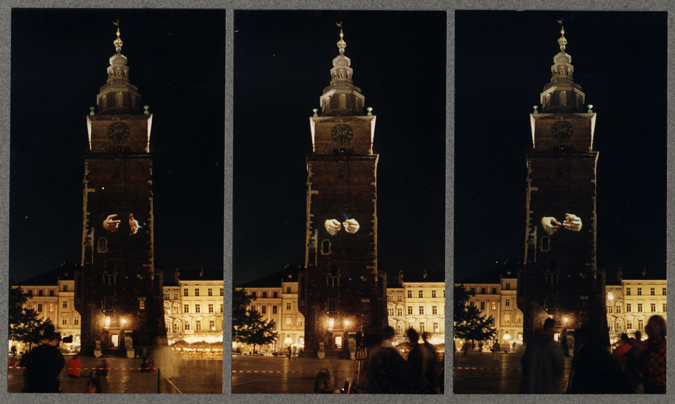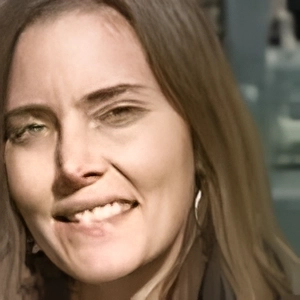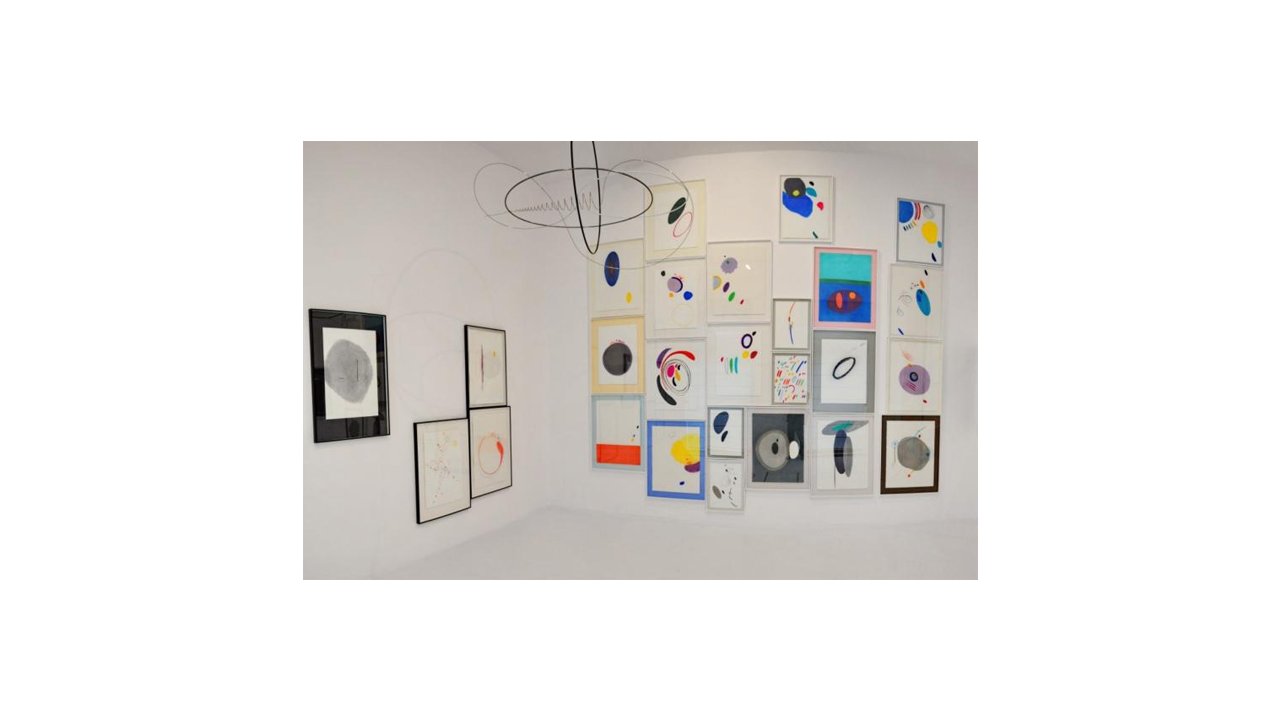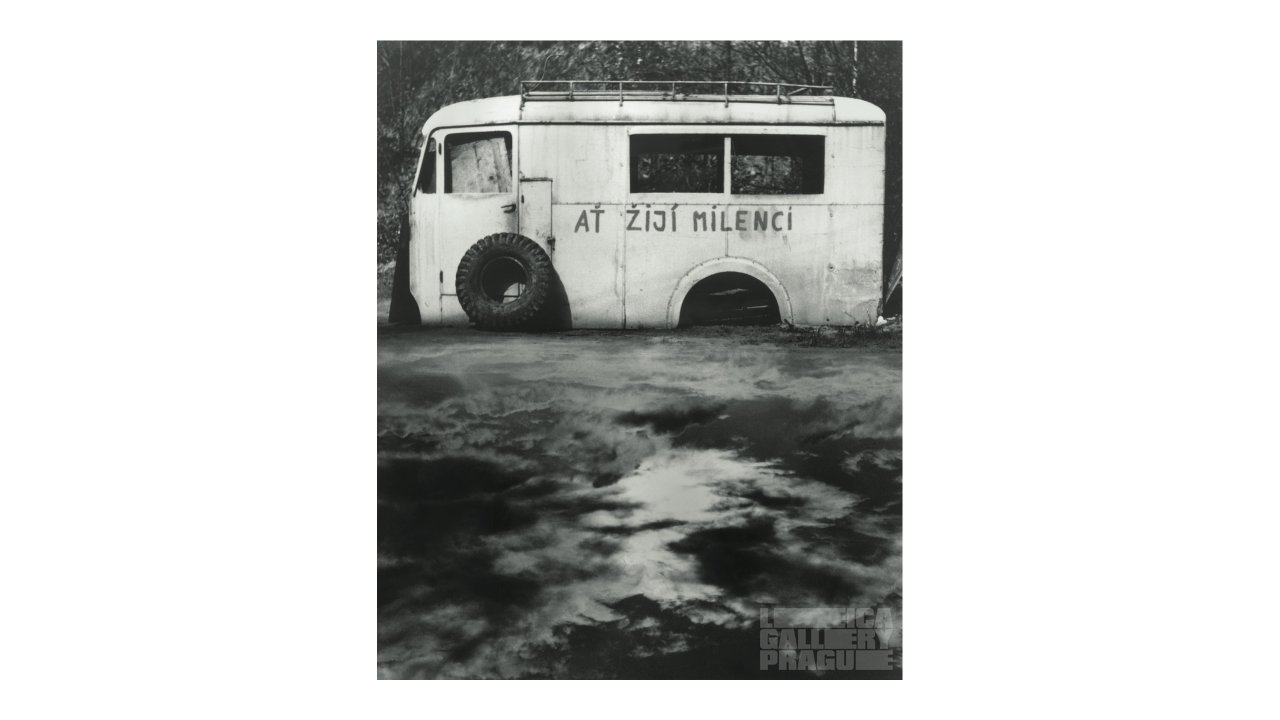Although the well-received František Kupka exhibition has now ended its run, there are several other exhibitions currently taking place around the city, which are of equal measure. Presenting their oeuvres in solo shows, or in one case a small piece of it, each of the artists are, like Kupka, pioneers in their own genre.
Karel Malich – Flowing Joy
Prague Castle Riding School, on now until May 5
Behind the wall bearing the artist’s surname in big, bold letters, one enters the world of Karel Malich – playful, fantastical, Jules Vern-ish, a universe full of energy and, yes, as the show’s title indicates: flowing joy. Featuring close to 300 pieces of his work – including reliefs, objects and pastels – its Malich’s wire sculptures that steal the show. Ranging from incredibly simplistic to profoundly intricate and detailed, each one is its own little world, which you can easily – and with pleasure ¬¬– sink inside of.
Today 88 years old and still going strong, Malich made his mark on the world through his profound wire sculptures tied with strings – said to be unparalleled in international modern art. “This is his original medium, one he has mastered perfectly,” writes Petr Volf in the exhibition’s description. As with Kupka, Malich is of world renown, invited to the Guggenheim Museum in New York in 1967 and Paris’ Centre Georges Pompidou in 1989.
Lending to the power of the presented work is its arrangement, authored by renowned Czech artist Federico Diaz – a student of Malichs’. The carpet goes from dark to light and at the end point of the exhibition’s main area (Malich’s pastel work as well as a documentary about the artist can be found just above the space – through the entrance to the bookstore and up a set of stairs on the right) is a massive circle – something like a stargate – on which are written song lyrics, that seem to appear and disappear. Just behind it is a circular space, which you can enter and find yet another of Malich’s remarkable wire sculptures – this one created between 1984-1988 (I won’t give away the title).
Of his inspiration, Malich is quoted as saying “something took me under its wing and thought of it inside me.” If you’re looking to feel inspired, this incredible body of work – spanning 50 years – is not to be missed.
Eva Fuka – Fabulation
Leica Gallery Prague, on now until April 14
Despite taking photographs for over 60 years, Eva Fuka’s repertoire consists only of “a couple of hundreds of pieces”, because she has made a “merciless selection” according to “Fabulation” curator Aleš Kisil. Amongst the more than 70 photographs featured in the show, the work reflects a keen eye, a unique sense of composition and an ability to capture a range of emotions from loneliness to a sense of humor.
A painter as well as photographer, Fuka is considered one of the pioneers of Czech photography. Despite difficulties having her work published – she and her husband were under the watchful eye of the secret police as they were recognized as being friends with so-called ‘subversive elements’ – she was, some years later, granted the privilege of being published in a few periodicals and was even permitted to take part in an exhibition having been recognized by critics as the most important figure of the new photography. She emigrated in 1967, essentially not existing in her own country. She returned to the Czech Republic in 1990.
Marking two stages in Fuka’s artistic development, the works on display include pictures taken in Czechoslovakia along with those taken during the artist’s travels in Europe from 1951-1964 and a collection of photos from New York. The later feature a number of works where Fuka has cut up various photos and placed them together to create a new composition. One that stands out, aptly titled “No”, is a hodgepodge of restrictive signs from “No Trespassing” to “No Fishing” to “No Dogs Allowed.” Those from Europe – featured in the galleries main space – feature many photos of individual people or signs of life without any people. Both “Pillows waiting for a head” and “Garbage Cans” reflect a sense of humor that’s found in both stages of Fuka’s featured work.
In a small room, a placard featuring writing from 1968 by translator and poet Emanuel Frynta – one of the so-called ‘subversive elements’ amongst Fuka’s friends – lends explanation to the exhibition’s name. It reads in part: “It was the fate of fabulators to exist on a higher plane, but also to plumb the depths; either way, they always had their own overriding desire or idea, their own sublime (or simply comic) craziness, their own charm, their own life.”
Krzysztof Wodiczko – Out/Inside(rs)
DOX, on now until May 6
In countries throughout the world, renowned Polish artist Krzysztof Wodiczko, who emigrated to North America in the late 1970’s, has given voice to those who have been marginalized by society. Combining art and technology in public space, Wodiczko has realized more than 80 public projections – large-scale slide and video projections on civic buildings, public monuments, memorials and statues – a specific genre of public art, of which he is the pioneer.
In his first solo show in the Czech Republic, DOX center for contemporary art is featuring one of his most comprehensive displays of his work to date. Set up in their own separate areas and presented on large screens and accompanied by documentaries about the projects (or other related commentaries) presented via televisions with a headphone set, the bulk of the show presents several of Wodiczko’s projections. Although they of course don’t have the same impact as they would live, each is still powerful. Amongst the featured projections is the Hiroshima Projection, presented in 1999 on the 54th anniversary of the atomic bombing of Hiroshima. Within the water just below the Atomic Bomb Dome or the Hiroshima Peace memorial, a set of hands is projected onto the water. The gesturing hands are of those giving their testimonies about the Hiroshima bombing and its effects thereafter – survivors, children of survivors, grandchildren – various generations. Another is the El Centro Cultural Projection Tijuana, which took place in 2001. Women workers of manufacturing and assembly plants run by international corporations, “maquiladora”, give their testimonies of discrimination, abuse and trauma. A small portion of their faces was projected onto El Centro Cultural via a special instrument, another genre of Wodiczko’s art. In 2012, in New York City’s Union Square, faces and hands of U.S veterans from Vietnam, Iraq and Afghanistan were projected onto the square’s Abraham Lincoln statute, giving testimonies about their experiences.

The core of the exhibition, a new piece created by Wodiczko which bears the exhibition’s name, was created in cooperation with DOX and members of the Roma community from Šluknov Spur – recently the site of demonstrations initiated by neo-fascist groups against the Roman community. Out/Inside(rs) projects the faces of Roma children onto the faces of statues of prominent historical Czech figures including František Palacký, Tomáš Garrigue Masaryk, Bedřich Smetana and Božena Němcová. The children give their statements and recollections of the event (in Czech, but there is English text in a folder). The artist’s writing, on the accompanying placard, speaks not only to this particular work, but his work in its entirety: “ If we wish to transform the questionable present into a better future, the ‘tradition of the vanquished’ and of the nameless must be projected onto the ‘history of the victors’. I strongly believe that cultural and artistic projects can help in this process.”
Other exhibitions on now worth seeing:
Signals from the Unknown. Czech Comics 1922-2012, also at DOX, until May 20
Swiss Positions/33 Takes on Sustainable Approaches to Building, Jaroslav Fragner Gallery, on now until April 14
Global Locals, National Technical Library, on now until March 28.
Do you know of any exhibitions going around town that are worth seeing? Let us know!
Related articles
- New Addition to Prague’s Gay Scene Opens In Vršovice
- World’s Largest Touring Video Games Exhibit Comes to Prague
- One for the Weekend: Prague Castle’s First Prosecco Festival
- Prague’s Museum of Communism Opens New Location and Exhibit
- 10 Thrilling, Dazzling, High-Flying Reasons to Visit Letní Letná 2017












 Reading time: 6 minutes
Reading time: 6 minutes 



































